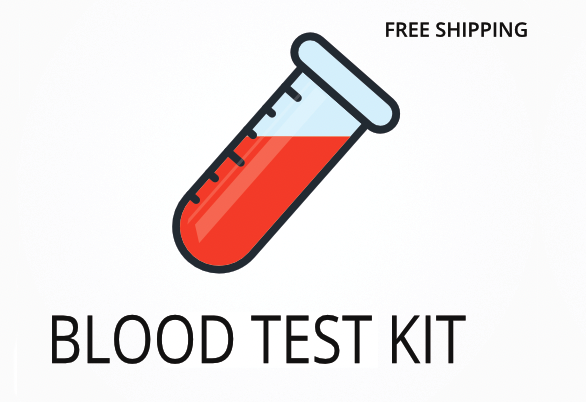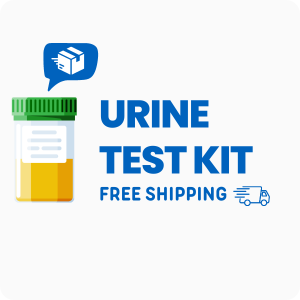Ordering the Metabolic Syndrome Test | Europe
The Metabolic Syndrome Test helps identify risk factors linked to heart disease, stroke, and type 2 diabetes by measuring blood sugar, cholesterol, triglycerides, and other key markers. Interestingly, research shows that even small changes in waist size can signal early metabolic changes before blood sugar or cholesterol levels shift.
Ordering this test provides a clear picture of your metabolic health and can help you make informed decisions with your healthcare provider. When ordering, you can expect these specific benefits:
- Measures fasting glucose and insulin to detect early insulin resistance.
- Assesses cholesterol types, including HDL, LDL, and VLDL, for a detailed lipid profile.
- Evaluates triglyceride levels, which are linked to heart and liver health.
- Checks hs-CRP, a marker for inflammation that can signal increased cardiovascular risk.
- Includes glycosylated hemoglobin (HbA1c) to show average blood sugar over the past three months.
Who Should Consider a Cardiometabolic Risk Panel
People who have noticed gradual weight gain, increased fatigue after meals, or a family history of heart disease may benefit from this test. For example, someone who has recently started a new exercise routine but still struggles with high blood pressure and stubborn belly fat may want to check for underlying metabolic issues.
Ordering may also be helpful in these situations:
- Someone with a history of gestational diabetes who wants to monitor long-term risk.
- A person with high triglycerides on a recent cholesterol panel.
- Anyone experiencing unexplained fatigue or low energy despite regular sleep.
- People with a family member diagnosed with metabolic syndrome or type 2 diabetes.
- Someone who has noticed darkened skin patches (acanthosis nigricans), which can be linked to insulin resistance.
This test can help detect early changes in blood sugar, cholesterol, and inflammation, allowing for targeted changes in diet, exercise, or medical care. Delaying this test may mean missing the chance to address risk factors before they become more difficult to manage.
Preparing for a Comprehensive Metabolic Panel
Fasting for at least 8 hours before your blood draw is required for this test to ensure accurate glucose and lipid measurements. Always follow any specific instructions your doctor or healthcare provider gives you, as these may include details about timing or sample collection that are important for your results.
Labs Included When Ordering Your Metabolic Syndrome Test
| Test Name | Reference Range | What This Marker Means | Low and High Levels of Metabolic Syndrome Test |
|---|---|---|---|
| Triglycerides | <100–150 | Triglycerides are a type of fat in your blood. High levels can increase the risk of heart and liver problems. |
High levels mean increased risk for heart disease, fatty liver, and metabolic syndrome.
Low levels mean possible malnutrition or issues with fat absorption. |
| Total Cholesterol | <200 | Total cholesterol measures all cholesterol types in your blood. It helps assess your risk for heart and blood vessel problems. |
High levels mean increased risk for heart and blood vessel disease.
Low levels mean possible hormone or nutritional issues. |
| HDL Cholesterol | >40 (men), >50 (women) | HDL, or “good” cholesterol, helps remove extra cholesterol from your blood. Higher levels are linked to lower heart risk. |
High levels mean better protection against heart disease.
Low levels mean higher risk for heart and blood vessel problems. |
| HDL % | >20% | HDL percentage shows how much of your total cholesterol is made up of HDL. A higher percentage is better for heart health. |
High levels mean a lower chance of heart disease.
Low levels mean a higher risk for heart and blood vessel problems. |
| LDL Cholesterol | <100 | LDL, or “bad” cholesterol, can build up in your blood vessels. Lower levels are better for your heart and blood flow. |
High levels mean increased risk for blocked arteries and heart disease.
Low levels mean lower risk for heart and blood vessel problems. |
| Fasting Insulin | 2–10 | Fasting insulin shows how much insulin your body makes when you haven’t eaten. It helps spot early insulin resistance. |
High levels mean possible insulin resistance or risk for type 2 diabetes.
Low levels mean possible issues with insulin production. |
| hs-CRP | <1.0 | hs-CRP is a marker for inflammation in your body. High levels can signal a higher risk for heart and blood vessel problems. |
High levels mean increased inflammation and higher risk for heart disease.
Low levels mean less inflammation and lower risk for heart problems. |
| VLDL Cholesterol | 5–30 | VLDL carries triglycerides in your blood. High levels are linked to a greater risk for heart and blood vessel disease. |
High levels mean increased risk for heart and blood vessel problems.
Low levels mean lower risk for these conditions. |
| Glycosylated Hemoglobin (HbA1c) | <5.7% | HbA1c shows your average blood sugar over the past three months. It helps spot early changes linked to diabetes risk. |
High levels mean increased risk for diabetes and blood vessel problems.
Low levels mean possible low blood sugar or certain blood conditions. |
Reference ranges may change slightly as labs update their standards or based on your age and sex.
Metabolic Syndrome Test FAQ
Is there Metabolic Syndrome Test testing near me?
This is a test kit that you can collect at a local draw site; check the draw location link at the top of the page. Since metabolic changes can develop slowly, having a nearby collection site makes it easier to monitor your risk factors without delay.
How do I interpret the test results?
While your treating physician should always review your results, we also offer a one-on-one test results review with our clinical team to help you understand your numbers and what they mean for your metabolic risk.
What is the cost of the test?
The price listed for the test includes standard shipping to you and return shipping to the lab; draw fees may apply. Ordering this test can help you address blood sugar and cholesterol issues early, which may help you make changes that improve your results faster.
How often should I retest?
Retesting every 6 to 12 months is recommended if you have risk factors or are making changes to your diet or exercise routine. Regular testing helps track progress and adjust your plan based on measurable changes in your blood markers.
How accurate is the test?
This test uses enzymatic colorimetric and immunoassay methods for each marker, with a specificity of 98% and sensitivity of 97%. TrueHealthLabs.com partners with CLIA-certified and CAP-certified laboratories to uphold rigorous testing standards for dependable results.
Medical Review Board
Reviewed by Jeff Donohue M.D. from Body Logic and Brady Hurst DC, CCCN. Written by True Health Lab’s team of editorial health contributors.
Disclaimer: This information is for educational purposes only and not intended as medical advice. Consult your healthcare provider for personalized guidance.
Why Customers Trust True Health Labs - What People are saying
Also rated 4.6 out of 5 based on 3452 ShopperApproved reviews- See all TrueHealthLabs.com reviews.









